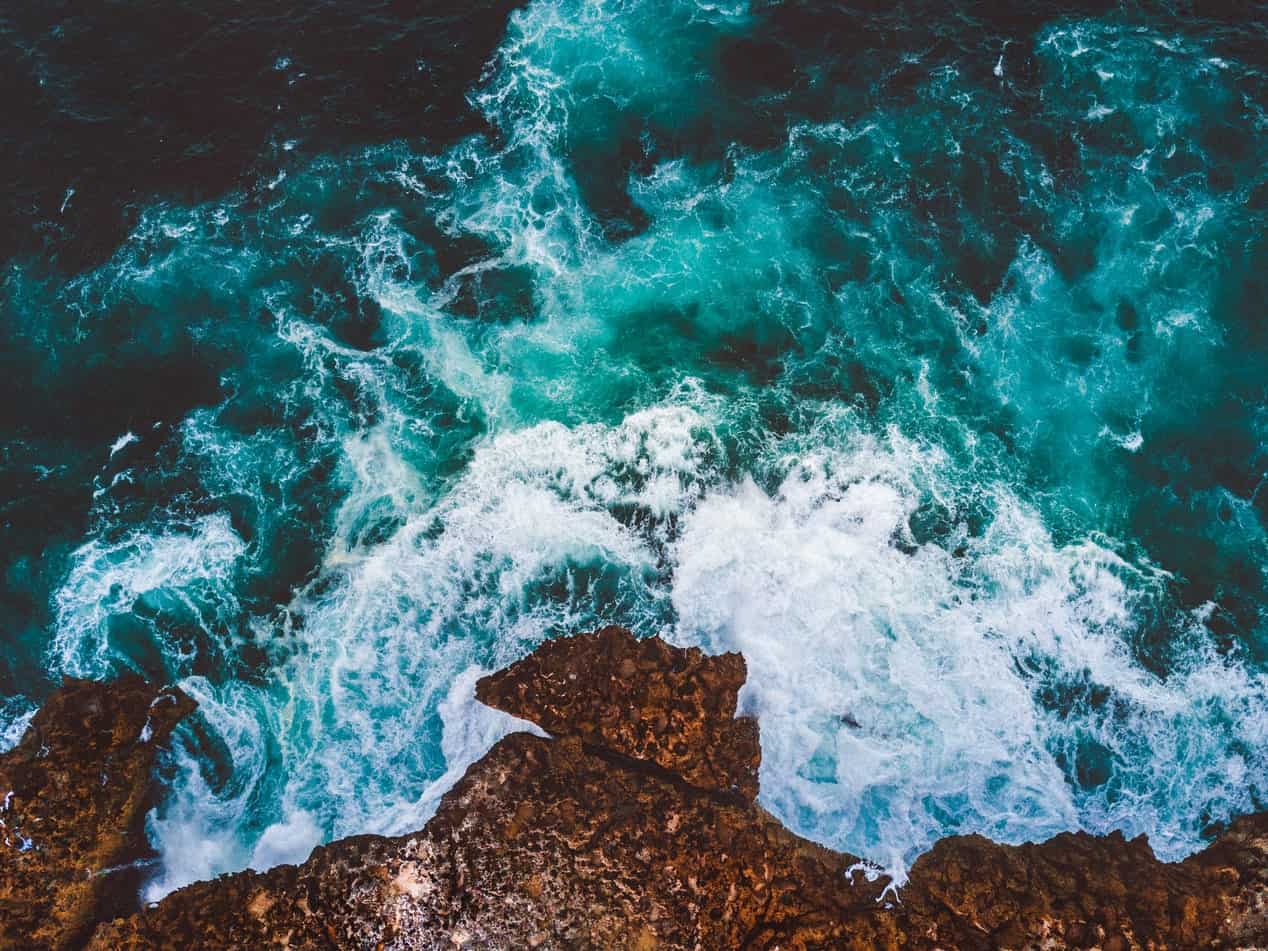Most people don’t think to consider the tides when grabbing their surfboard and heading out. Tides affect the waves and surf conditions and are a very good indicator on the amount and type of waves surfers will see.
So, how do the tides affect surf conditions? There are two tides per day which are twelve hours apart from low tide to high tide. When the tide is high and continues to rise, each wave will continue to rise. If the tide is high and falling, the waves will decrease with each wave. Waves will be less powerful with low tide approaching.
One might think to catch the most waves, one would do best to go early in the morning and sit and catch as many waves as possible. You can actually catch more waves by first looking at a few factors and waiting for the optimal time to surf. The moon, the sun, the season, and the tide all affect surf conditions and dictate which waves you will be catching and when.
I’ve done a lot of research on tides and their effects on waves. What I’ve found is that tides are the most simple to understand and have the most consistent effect of the surf. Tides are simply the cause of the rise and fall of the water. That being said the rise and fall of the water does have an affect on the quality of the waves being surfed.
The waves are caused by wind and they in turn break due to the conditions of the earth underneath the water. Tides, on the other hand, play a role in the quality of the waves and quantity of the water that is being surfed.
Keith Cooley explains what tides are and what causes them in his article, Moon Tides: How The Moon Affects Ocean Tides, “The word “tides” is a generic term used to define the alternating rise and fall in sea level with respect to the land, produced by the gravitational attraction of the moon and the sun.”
The moon pulls the water away from the Earth like a magnet, this would cause a low tide and on the other side of the Earth you would have high tide. Due to the rotation of the Earth this cycle happens twice a day.
Surfers often talk about tides and their effects on the best time to surf. Often you will see surfers waiting for the “big break,” but how do they know when this wave is coming?
Tides affect the push and pull of the water. The conditions of the waves and surf will be dependent factors such as friction caused by the depth of the water or wind. In other words, when the wave breaks at its highest will be affected by both tides and the nature of the beach you are surfing.
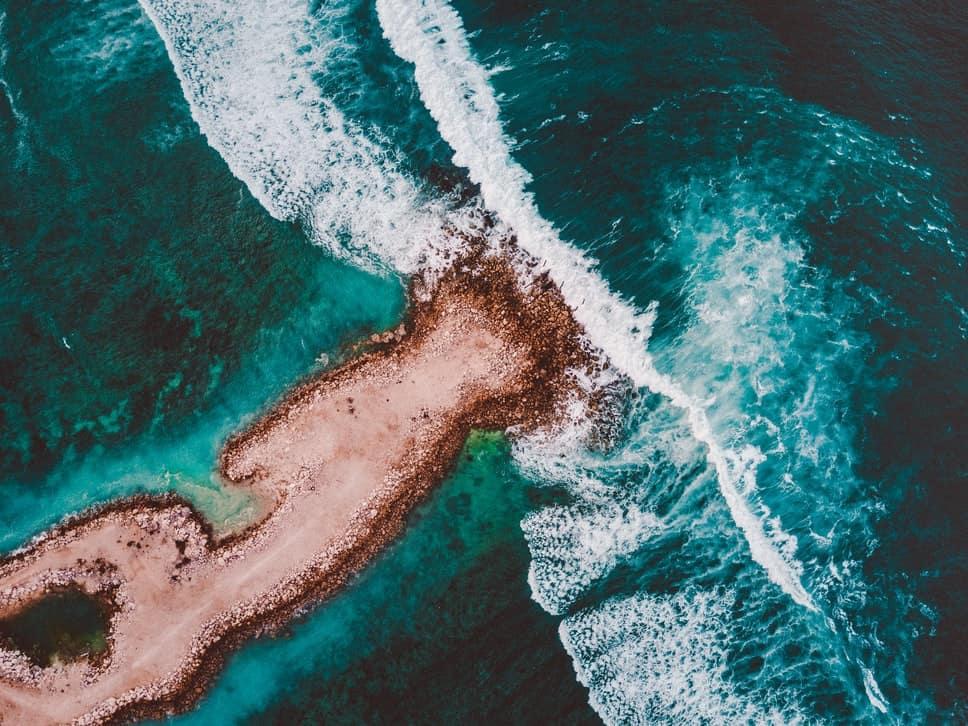
As a rule, most beaches favor an incoming high-tide. This is called a “tidal push” as it lends to a forward momentum of the water. The waves roll in as the tide rolls in, creating ideal surfing conditions.
On the other hand, low-tide would pull the water out as the waves roll in, disrupting surfers. Under other conditions, there are beaches where low-tide is prefered simply because there is less water and thus waves can break with more power. This will be explained in further detail later.
Another reason why most beaches favor an incoming high-tide is because of the energy of the waves. As the tide rises the waves grow stronger because there is more water being affected by the wind and the land. Approaching a tidal shift at the end of high-tide the waves grow weaker. A tidal shift is when the ocean changes to rise or fall. From its highest to fall or from its lowest to rise.
The daily cycle is 12 hours and 25.2 minutes from low to high and high to low. Therefore, if the tide is incoming and the waves are too big, the waves will only continue to grow whereas if the tide is going out the waves will weaken.
Understanding that most beaches favor an incoming high tide makes it simple to find the right time to surf and the time in which the “big break” will occur. Mostly, this high point of high-tide is when the best break will be.
How Wind Affects Waves And Surf Conditions
At the beginning of this article I spoke about factors that would affect the surf. Wind causes waves and therefore affects surf conditions. Surfing is in essence due to the effects of wind on the water. Waves get bigger as wind blows for longer, harder, and for distance. These three factors play a significant role in the creation of waves, until they disappear or break.
Waves break when they hit something, whether a rock or the beach itself. Waves are caused by a circular motion of the water as it is pushed by the wind. Wind pushes the water up and gravity pulls it back down. This can be seen in swells in the water. The gradual rise of fall of the water is caused by this circular motion.
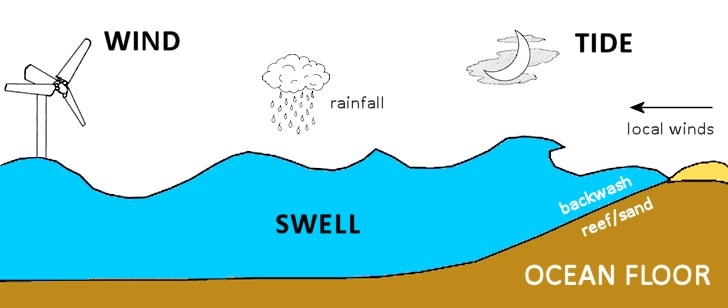
As the waves approach land the circular motion of the water particles is compressed between the water’s surface and the ground. This causes the waves to become steeper creating peaks in the water. Eventually this tension will break. Or rather, the wave breaks creating the condition in which we surf.
This is explained by Jessica Carilli in her article about surfers and wind.
Beyond the wind’s creation of the waves, the wind also had an affect on the quality of the waves. These winds in particular are onshore and offshore winds. They play a key role in a surfers relationship with the waves.
Onshore winds are winds that blow from the ocean towards the land. These winds can cause waves to break before they’re meant to. As the wave reaches its peak, the wind from behind pushes the peak and can cause the wave to break before it should. The waves affected by onshore winds usually become shapeless or lacking in energy.
On the other hand, offshore winds, winds that blow from land to the ocean, will stop waves from breaking. In this case, the wind will push the peak in the opposite direction. This will make the waves steeper for longer. These conditions are in most cases ideal for surfers, as they would prefer to have steep waves.
As stated, in general surfers prefer offshore winds because they produce conditions for better surf, but sometimes offshore winds can create conditions that are unsurfable.
This happens if the winds are too strong. This will cause spray off the peak of the wave that can blind surfers. The wind blows the water off the wave. Another reason might be that the winds are so strong that the surfer will simply get blown over.
As a rule, offshore winds occur in the morning and onshore in the afternoon. This is why you will see surfers in the morning.
How The Depth Of The Ocean Affects Waves And Surf Conditions
The land underneath the waves plays a key role in the ways in which the waves break. As mentioned earlier, it is when the wave meets land that the way breaks. The formation of this land is called bathymetry.
The National Oceanic and Atmospheric Administration states bathymetry as “the study of ‘beds’ or ‘floors’ of water bodies including the ocean, rivers, streams, and lakes.”
As a wave approaches the shore line, the friction between the water and the earth will cause the wave to slow, but the water on the surface continues to go the same speed. This is what causes waves to break in the conditions that create “barrells” in which surfers love.
Naturally, the shape of the land in which the waves break upon would play a part in the conditions of the waves.
One of the basic characteristics of the land would be how steep it is. If the land in which the wave is hitting is too steep the wave will “surge.” Imagine that as the wave is created due to the introduction of land creating the peak that we have spoken about.
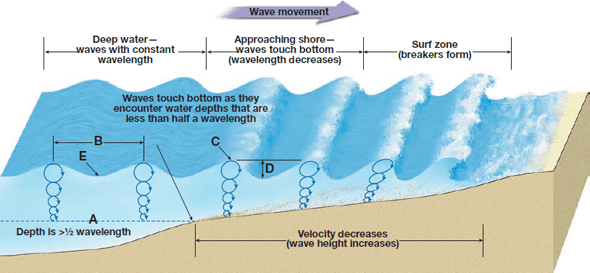
Now if the land steepens too quickly the surface of the water doesn’t have enough time to begin to move quicker than the rest of the wave creating the conditions for surf. Therefore, the wave never has the opportunity to break in the first place. These ways are generally small and “break” close to the beach. Surging waves are essentially unsurfable as most surfers wouldn’t consider them waves.
A less steep beach would cause the wave to collapse rather than break. The surface of the wave does move faster than the bottom, but not so much so that it reaches a peak and breaks. This wave collapses as it reaches the beach and is also unsurfable.
This wave would appear similar to your normal surfable wave but instead of breaking over itself creating a barrel they would collapse before the peak of the way could fall over the bottom.
A plunging wave is a surfable wave. This is caused by the perfect amount of gradual increase in land under the water. The land does not come up so quickly that the wave does not have a chance to break. This plunging wave is ideal for surfers. This allows the peak of the wave to break in front of the bottom and create a barrel to surf.
A good example of this kind of steady rise of the land beneath the water can be seen in Hawaii caused by the volcanic rock that created the islands. This is, in part, why Hawaii is known for its great surf.
Another type of wave would be a spilling wave caused by not enough slope of the land under the water. These waves don’t break or don’t break with any power. The friction under the water doesn’t occur quickly enough for the wave to break with force.
Imagine that you have the perfect amount of slope for the wave to break, but it breaks all at once onto the shore. This kind of circumstance would create waves that were unsurfable.
This is affected by the direction of the waves, the slope of the land, the location of the beach, and the nature of the beach. The land underneath the water plays a large role in making this either happen or not.
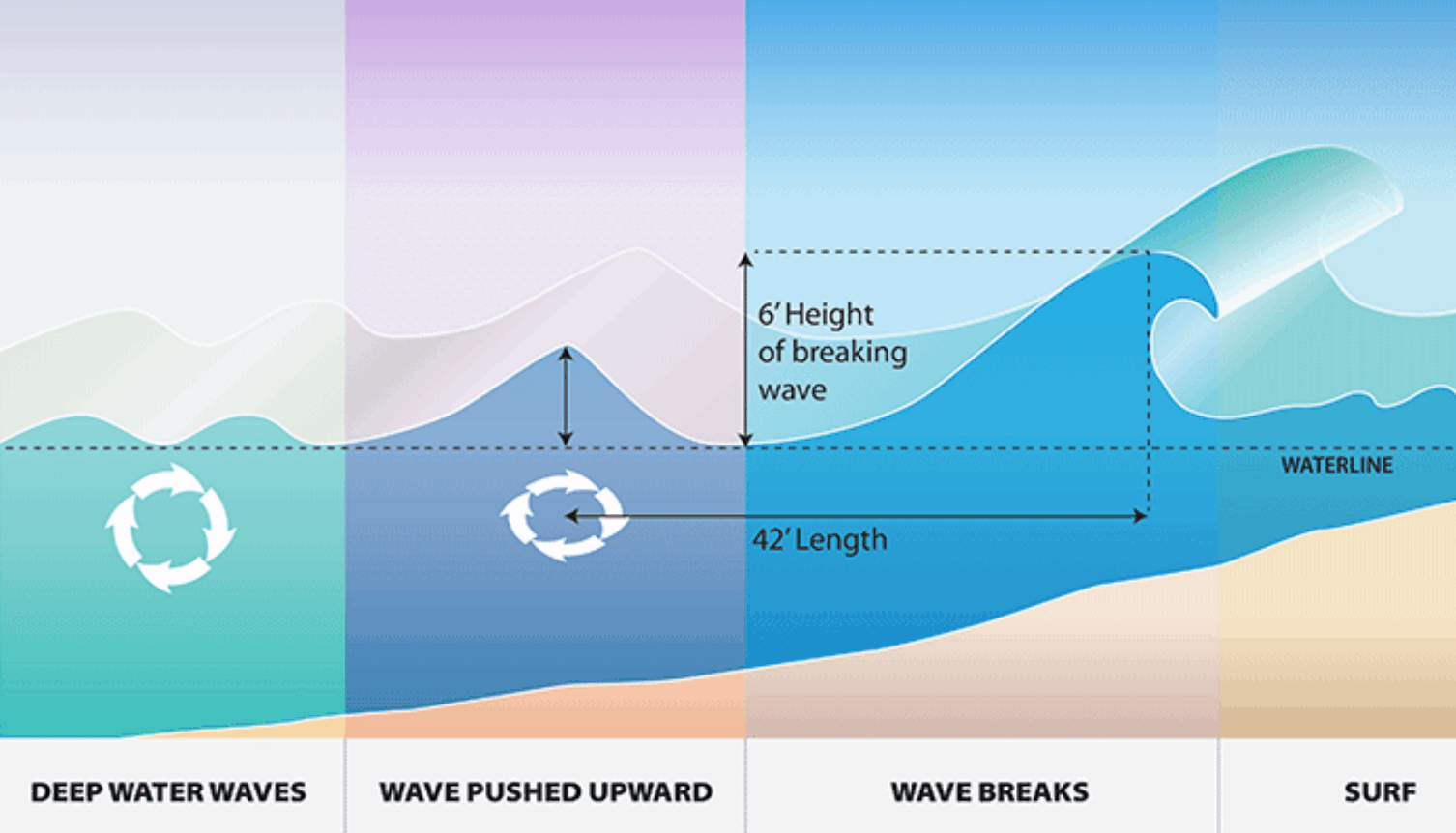
Incredible beaches, such as Blacks Beach in California, have extraordinary bathymetry to create surf. Blacks beach has an underwater valley that would create a circumstance in which there is no friction at all. This means that the wave will continue at the speed in which the wind allows. Then it would hit the land at incredible speeds.
As mentioned earlier, most beaches are best to surf with an incoming high-tide, low to high. This being said, there are times when high-tide creates terrible surf. This would be due to the nature of the beach. For example, if there is too much water, caused by high-tide, then the waves will lose their power. This is due to the bathymetry of the beach. If the friction on the water caused by the land is not enough to cause a good break then the tide is too high.
Tides, Waves, and Surf Conditions
For the most part, when surfing, people don’t quite think to consider the tides. This is why you see many surfers waiting for long periods of time. Those surfers who are a little bit more seasoned however, know just how important the tide can be in predicting surf conditions.
Tides will affect the type of wave, length of time of certain waves, and the time of day the waves will be higher or lower. All of the many different ways to put information together can give surfers exceptional predictions regarding surfing conditions. Tides are a daily, natural force that cause waves and surfing.
It all has to do with gravity. The Moon and the Sun both have gravitational pulls that surround the Earth as they rotate from their positions. While one is moving one direction, the other is heading along its scheduled path. This creates the tides we see throughout all of the oceans of the world.
We live in an age where we have an unlimited amount of information available to us. It is far easier to predict surfing conditions around the world today than it was decades ago. One can look ahead on the tidal charts, check the internet, and even connect to sites with beach cams.
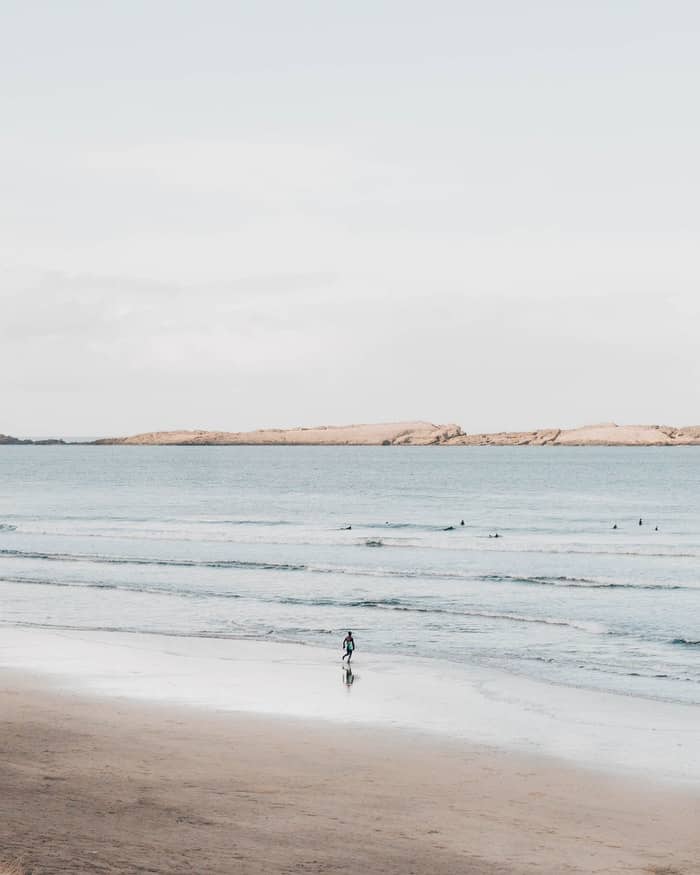
Most beaches have two tides daily, a low tide and a high tide. Daily tide cycles consist of 12 hours and 25.2 minutes from low tide to high tide and back again to low tide.
When a tide is too high and continues to rise, each wave one after another, will be higher. If the tide is high and falling, the waves will decrease with each wave. With a low tide approaching, the waves will be flat and less powerful.
Predicting the tides effect on surfing conditions may not always be in just looking for a low tide or a high tide. It is possible to surf well in both. Some surf spots also work best in high tide, while others are best on a low tide. Still yet, some surf spots are incredible on a pushing tide.
Many different factors go into which spot is best to surf and when. Factors such as reefs, sand, rocks, tide, what cycle the moon is in, and more go into surf conditions. When predicting surf conditions, it is important to look into all varying factors.
Tide charts, as well as other reports, can greatly aid you in putting all of the variables together to correctly predict surfing conditions. It is helpful to look at the tide charts and see previous years of a certain date. You can get a great idea how that area behaves on that specific date.
No two locations will have the same surf conditions. Every beach has a different tide and each beach is different. It is vital to research the area you plan to surf when looking for your surf conditions.
The Sun and Moon Create Tides
Our Sun and our Moon both influence our ocean tides, with the Moon being the largest contributor. The Sun causes tides as well, but they are smaller tides than the moon creates. Gravitational pull from the Moon generates what we call the tidal force.
What we call tidal force then causes Earth, and our water in the oceans, to bulge on the side farthest from the Moon and nearest to the Moon. The bulges of water are our high tides.
The side of the Earth that is not near the Moon has inertia playing the part of tides for our second tidal cycle. Water needs to keep doing the same thing until it is caused by another force to stop it. While the water rises on the side of the Earth that the moon is on, the water resists the change and rises on the opposite side.
Even though the Sun plays a smaller role, it is still a vital contributor to our tides. Our Sun exerts energy, just not as much as the Moon. Every two weeks the Sun and the Moon are in alignment, which creates extreme high and low tides.
How Do Tides Affect the Surf?
Tide level is not always as important as tide height (high or low) is. The larger impact is from the slope of the bottom and at what speed the bottom rises at will determine the type of wave that will be on the surf.
A flat bottom will see a wave spill and be a mellow wave, which is great to learn to surf on. Steep slope bottoms will plunge and give rise to the preferred surfing wave, the pipeline. Steep bottoms will not have enough time to break and will rise up on the beach where people don’t normally surf.
Many other factors will affect how waves will act during different tides. Factors such as if the beach is a sand beach or reef, do sandbars form and are there rocks to cause waves to break early all contribute also to the waves produced by the tide. It is necessary to track the surf conditions of your beach to find the optimum surfing waves affected by tide.
Plan Your Surfing
Knowing when the optimal surfing conditions is not too difficult. It can seem overwhelming to try to map tide times, lunar movements, and more. Here a few ways to easily look up all that you need to know without having to break a sweat.
Always remember to look for surfing conditions that are appropriate for your surf experience and which board you will be surfing on. If you have multiple boards, it is good to look at the surf conditions to see which surfboard to take for the day. Stay safe and look for the surf conditions you are most comfortable surfing in.
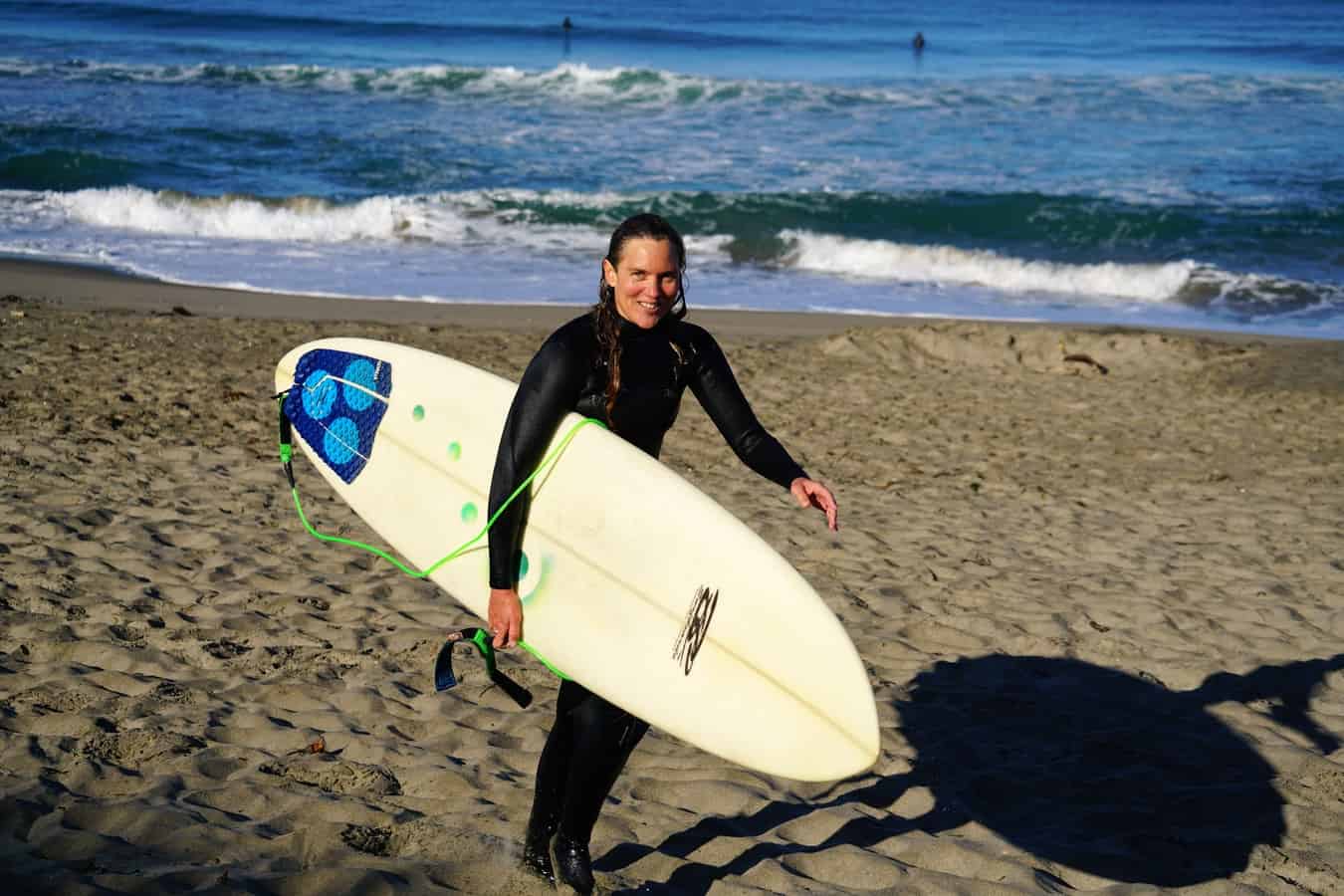
Check The Surf Reports
You can easily look online and search for a surf report in your area. Almost every surfing area has an online surf report so you can determine the best time to be surfing. It is surprisingly helpful and they give just about all of the information you will need for your day to day surfing.
Surf reports will show swell period, wind direction, wave height, and tide. Most surfers come to the surf report to see how big the waves will be. This is found in the form of swell period and wave height. Many websites that have reports also have webcams of the beach you can watch.
Read Tide Charts
Tide Charts aid in predicting the times and levels of high and low tides in different areas and locations. NOAA Center for Operational Oceanographic Products and Services (CO-OPS) has tide predictions available online for more than 3,000 locations around the United States. Users can download and view information for up to two years past, and future.
Knowing the times of tides is crucial in learning the optimal surf conditions to surf in. It is exceptionally handy that this site allows you to look up several dates in the past and in the future. You will have the ability to compare up to the last two years for any given date you look at as well as future dates. You can plan a surf day the same day, a few days, or even a few months out.
Take Notes
Familiarizing yourself with your regular surf spot is ideal in planning your surf adventures. Knowing how different tides will affect different surfing conditions will go a long way into helping you know exactly when you want to surf.
Take notes on the various times and days that you surf at your spot. Note the weather, the wave type, the time of day, the tide, and if you preferred that time or not. Cross reference your notes with the reports and time tables. Note which surf conditions and which board best accommodate your level of abilities as well as your expectations for your surf experiences.
Ultimately, the best surf conditions are the ones that you are most comfortable with and that let you enjoy your surfing time. Surfing should be a positive experience and greatly enjoyed, go with the days and times that give you the most joy and least frustration.

